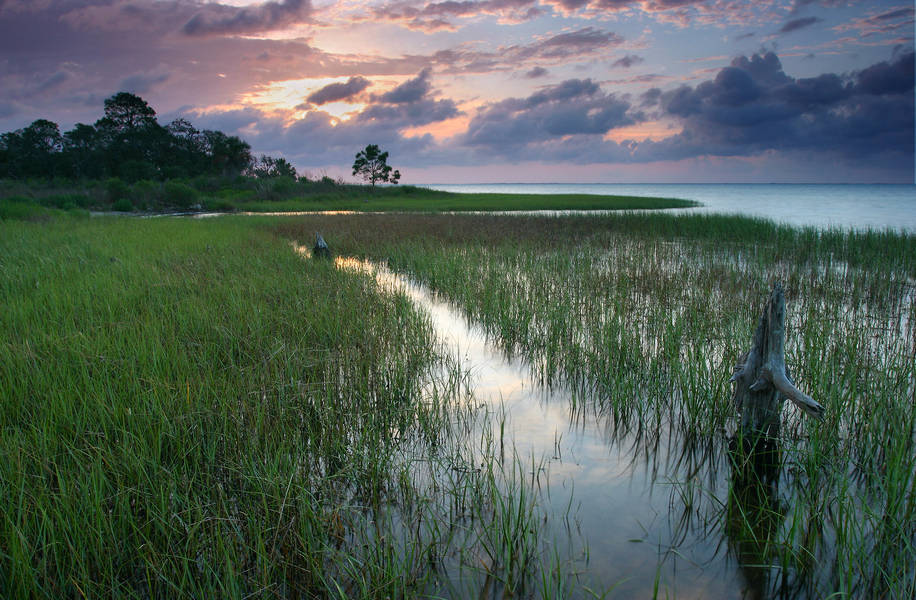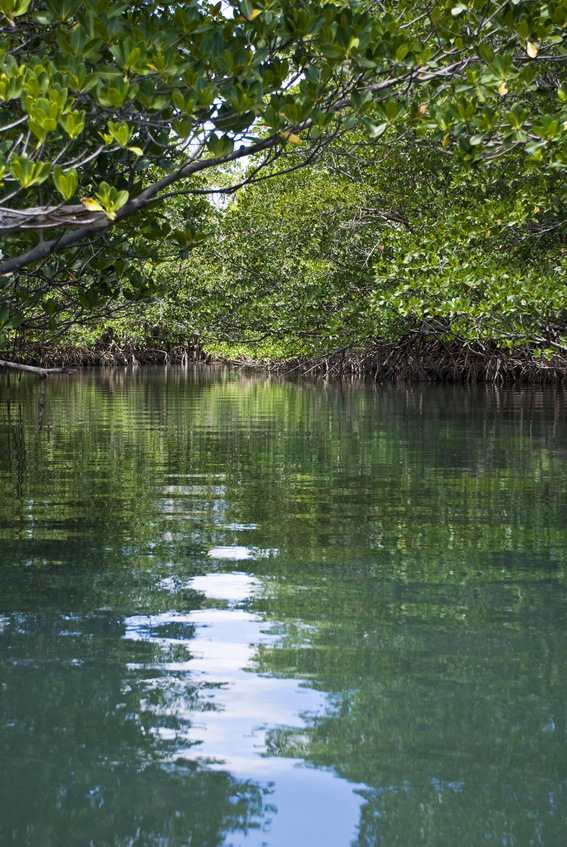About Mangroves
Mangroves are tropical plants that are adapted to loose, wet soils, salt water and being periodically submerged by tides. Four major factors appear to limit the distribution of mangroves: climate, salt water, tidal fluctuation and soil type.
There are more that 50 species of mangroves found throughout the world. The department implements statutes that regulate the alteration and trimming of mangroves. Three species of tropical wetland trees that grow along the shoreline of many estuaries in central and southern Florida are classified as mangroves. The three species are native to Florida: red mangrove (Rhizophora mangle), Black mangrove (Avicennia germinans) and White mangrove (Laguncularia racemosa).
The trimming and alteration of mangroves is governed by sections 403.9321-403.9333, Florida Statutes, Mangrove Trimming and Preservation Act. The mangrove program is implemented by the department as well as several delegated local governments. Mangrove trimming and alteration may be done by property owners under certain exemptions, as specified in section 403.9326, F.S. The trimming will require the services of a professional mangrove trimmer and may require a permit.
Identifying Mangroves
Red mangroves are easily identified by their "prop roots," which are tangled, reddish, aerial roots that originate from the trunk and branches. Their leaves are 1 to 5 inches long, broad and blunt on the tip, shiny, deep green on top, and paler on the underside.
Black mangroves can be identified by numerous finger-like projections, called pneumatophores, that protrude from the soil around the tree's trunk. Black mangrove leaves are oblong, shiny green on top and covered with short dense hairs on the underside. Black mangroves are usually found in slightly higher elevations upland from red mangroves.
White mangroves have no visible aerial root system like red and black mangroves. The easiest way to identify white mangroves is by the leaves. The leaves are up to 3 inches long, elliptical (rounded at both ends), yellowish in color, and have two distinguishing glands at the base of each leaf blade where the stem begins. White mangroves are usually located in elevations higher and farther upland than either the red or black mangroves.
It has been estimated that there are over 500,000 acres of mangroves remaining in the coastal areas of Central and South Florida. Of this total, it is estimated that at least 80% are under some form of governmental or private ownership or control for preservation or conservation purposes.
Values and Functions of Mangroves
- Mangroves trap and cycle various organic materials, chemical elements, and important nutrients in the coastal ecosystem.
- Mangroves provide one of the basic food chain resources for marine organisms.
- Mangroves provide physical habitat and nursery grounds for a wide variety of marine organisms, many of which have important recreational or commercial value.
- Mangroves serve as storm buffers by reducing wind and wave action in shallow shoreline areas.
For more information on mangroves please visit the department's Mangrove Trimming and Preservation Act Training Presentation page.



